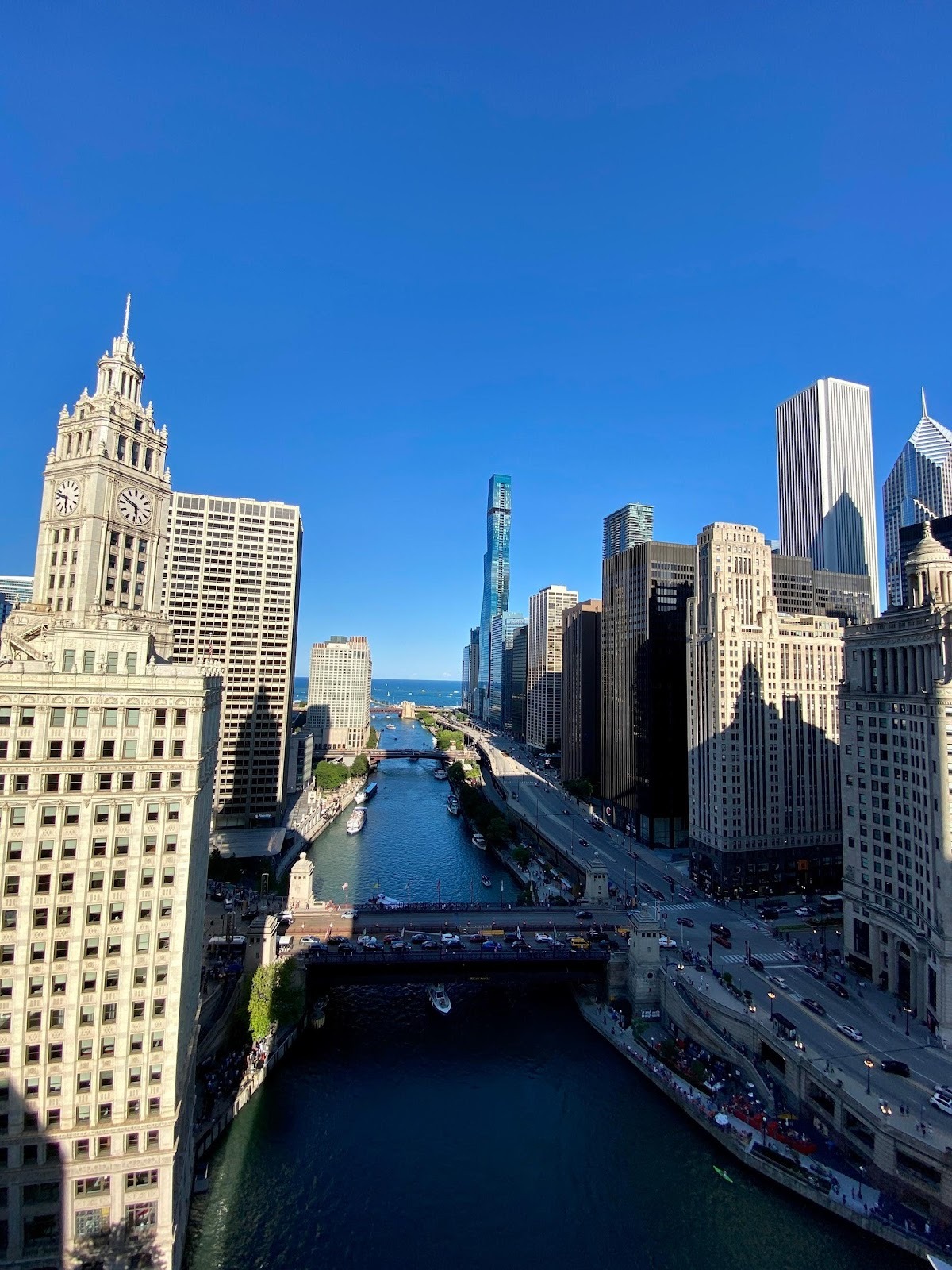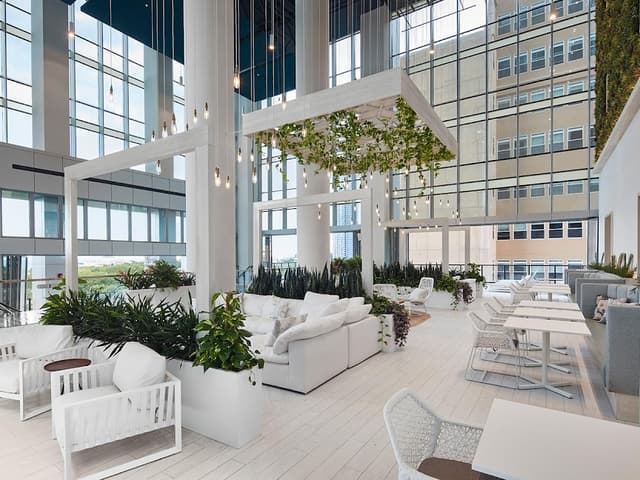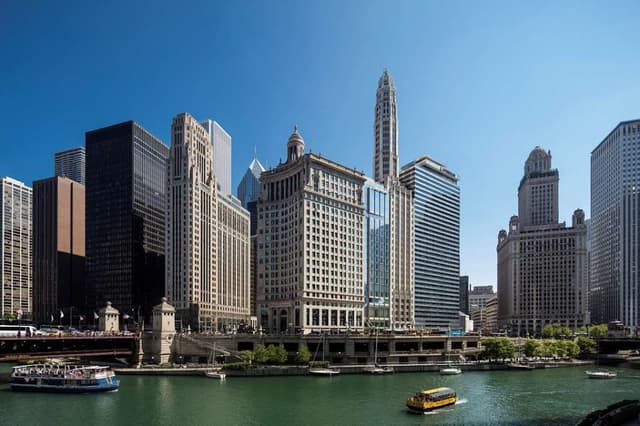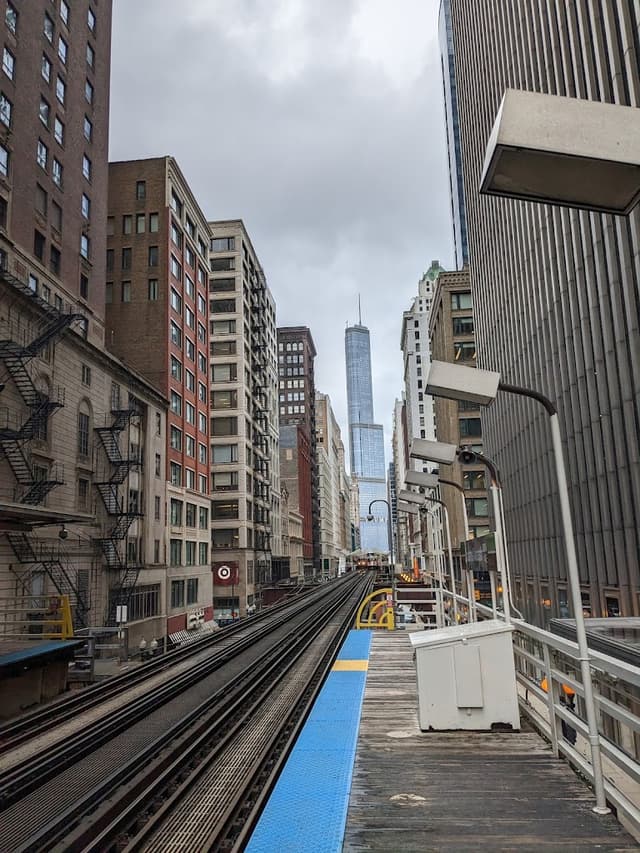Ultimate Chicago 101 Guide- itinerary, recs, things to know

Being my home city, Chicago is the first place I fell in love with.
More than anything, I am still fascinated by the city because of its mosaic of diverse cultures and neighborhoods.
Before moving to Madrid, I worked as a Chicago tour guide, with an average rating of 4.98/5 stars on Airbnb.
Here is the ultimate guide of the 10 best things to do for first-time visitors to Chicago.
But first! Where to stay:
All of the following recommendations are based on my experience as a local living in the city and are centrally located in safe areas.




Budget option-

1. Snap a picture with the Bean
A lentil makes for a peculiar emblem of a city — but at 110 tons of stainless-steel — it is undoubtedly an impressive one.
The sculpture’s official name is “Cloud Gate,” as designated by its creator, Anish Kapoor. Its exterior is inspired by liquid mercury, reflecting Chicago’s skyline and visitors for an epic photo opportunity.
The Bean’s public debut was in 2006, two years after its home, Millenium Park, was opened, as the city’s way to celebrate the new millennium.
Other notable sites in Millenium Park include the Jay Pritzker Pavilion, which often hosts free events during summer; Lurie Gardens, a peaceful, underrated spot for skyline photos; and the Nichols Bridgeway, a scenic pedestrian bridge that connects to the Art Institute of Chicago.
2. Visit a museum
Calling all museum lovers! Chicago has a thriving arts and culture scene, which is reflected in its multitude of museums.
Here are five that you might want to check out:
The Art Institute of Chicago
Founded in 1879, the Art Institute of Chicago is one of the oldest and largest art museums in the country. It houses over 300,000 art pieces — ranging from impressionist paintings to modern cultural pieces — some as old as 5,000 years.
The Field Museum of Natural History
Egyptian mummies, man-eating lions, and Sue, one of the largest discovered T. rex skeletons — oh-my! History enthusiasts have all of these and much more to explore in the 4.5+ million years housed in the Field Museum.
Museum of Science and Industry
The Museum of Science and Industry is the largest science museum in the Western hemisphere. It features unique exhibits that showcase a range of subjects from a real submarine to a fairy castle; interactive experiences; and various movie screenings in their domed wraparound movie theater that appeal to all-ages.
Adler Planetarium
The first planetarium in the United States. How cool!?It was founded in 1930 and is now the premier place to get lost in other worlds. In addition to educational exhibits, visitors also have the opportunity to watch a “Sky Show”, located in Adler’s dome theater. Adler’s location also offers great views of the city at night.
Chicago History Museum
3. Walk on air at Skydeck Chicago
If you have ever wanted to know what it is like to levitate, this is your opportunity to get a taste — 1353 feet above ground.
Take the elevator up 103 floors, choose one of the four glass boxes to step into, and enjoy the best aerial views of Chicago.
The observation deck is located in the Willis Tower, previously the Sears Tower, which is the tallest building in Chicago at 110 stories.
The Willis Tower was finished in 1973, and was the tallest building in the world at that time — an unsurprising feat considering that Chicago built the world’s first skyscraper.
4. Enjoy a Chicago River Cruise
The Chicago River spans a total of 156 miles (251 km), with its Main Stem in the heart of the city.
It is the only river in the world that flows backwards — the first engineering feat of its kind.
One of the best ways to enjoy the river is taking a boat tour, such as the river and architecture tour, the most popular tour since Chicago is an internationally recognized hub for architectural design.
Pedestrians can also take advantage of the free Chicago Riverwalk: a scenic 1.25 mile walkway along the river that leads to Lake Michigan.
Numerous carnival rides, shops and restaurants line the length of the 3,300 foot pier.
It was opened in 1916 to honor the veterans of WWl and now welcomes around nine million guests each year.
Besides strolling along the pier, the main attraction is the 196 foot Centennial Ferris Wheel, with enclosed, climate-controlled gondolas for year-round panoramic views.
The ferris wheel is another of Chicago’s emblems — as the first world’s ferris wheel was invented for the city’s Worlds Fair in 1893.
6. Admire Buckingham Fountain
The crown jewel of Grant Park is a dazzling, three-tiered fountain at 7 meters tall and 85 meters in diameter, making it one of the largest fountains in the world.
It is a memorial dedicated by Kate Buckingham to her late brother, Clarence, in 1927.
Its design was inspired by the Latona Fountain at the Palace of Versailles.
Water erupts from the fountain during the months of May through October, depending on the weather.
Every hour, a 20 minute light and music show is displayed.
7. Explore an ethnic enclave
Chicago’s ethnic kaleidoscope can be explored throughout the city’s 77 neighborhoods. Here is a short guide to five of my favorites:
Chinatown
Chicago’s Chinatown is located just three miles South of downtown – home to bright red architecture and the aroma of steamed dumplings.
Established in 1912, it was initially a settlement area for Chinese immigrants in the 1900s.
Now it is home to over 20,000 Chinese residents and is a popular destination for foodies.
Fill up on your favorite Chinese foods, then be sure to explore the Chinese American Museum of Chicago and stroll through Ping Tom Memorial Park, which offers some of the best views of the city skyline.
Pilsen
The name “Pilsen” comes from a town in the Czech Republic – the name given to this Chicago neighborhood previously dominated by Czech immigrants and other Eastern Europeans.
After displacement from city reconstruction, Mexican American families were forced to the Pilsen area, which is now a predominantly Latino community.
Visitors to Pilsen can delve into Mexican American culture at the National Museum of Mexican Art, tour the vibrant street murals along 16th Street, and devour some of the best tacos in the city.
Asia on Argyle
Also known as “Little Vietnam,” this neighborhood in Uptown Chicago is one of the most culturally diverse.
Many Vietnamese and Cambodian refugees settled in the area in the 1970s, along with Chinese American entrepreneurs.
Today, Uptown has the largest Vietnamese and Ethiopian population in the city. Argyle Street reflects this in its concentration of Southeast Asian restaurants, such as Vietnamese and Thai, as well as East African eateries.
Little India
What began as a mostly Jewish community is now a hotspot for South Asian shops and food.
Devon Avenue in the West Ridge neighborhood of Chicago, known as “Little India,” is where the first Patel Brothers opened in 1974 — the largest Indian grocery store chain in the United States.
The entire 15-block strip is lined with grocery stores, clothing shops and restaurants from India, in addition to Pakistan, Sri Lanka and Bangladesh.
Bronzeville
Bronzville, located on Chicago’s South Side, is a center of Black American culture that developed from the United States’ Great Migration in the early 1900s.
The community is also home to many influential Black Americans — such as Jazz musician Louis Armstrong, and journalist and social activist Ida B. Wells.
This neighborhood features many important buildings to learn about pertaining to Black American history, together with Black-owned art galleries, restaurants and cafes.
8. Check out the theater and music scene
Chicago has a thriving cultural scene, which is reflected in the myriad of theaters and music venues.
For theater, visitors can find a number of different shows in Chicago’s downtown Theatre District, at iconic sites such as the Goodman Theatre, Cadillac Palace Theatre, and the Chicago Theatre.
For music, Chicago is particularly known for its blues, after the arrival of many blues musicians from the Great Migration.
One of the city’s largest outdoor music festivals is the Chicago Blues Festival, a free annual event in June, where some of the most famous blues artists have played.
Jazz is another gift from the Great Migration that is ingrained into Chicago’s culture.
The Green Mill Cocktail Lounge, one of the country’s oldest continuously running jazz clubs in the country, is a time machine that transports visitors onto a ‘30s swing dance floor.
9. Go to the beach
Chicago may be far from the nearest ocean, but do not underestimate its proximity to the largest of the Great Lakes located entirely in the United States: Lake Michigan.
Lake Michigan deceptively resembles an ocean from its turquoise blue water that appears to extend endlessly.
The lake is Chicago’s main water source as well as a delightful source of recreation.
There are dozens of beaches across the city for swimming during the summer, with North Avenue Beach being one of the most popular.
Chicagoans also love to utilize the Chicago Lakefront Trail, which runs a total length of 18.5 miles, for walking, running or biking throughout the year.
10. Try deep-dish pizza
When it comes to food, one of Chicago’s most iconic dishes is hands-down deep-dish pizza.
Deep-dish pizza is a massive pie of multiple layers of Mozzarella cheese — topped with chunky tomato sauce — that is baked in a pan resulting in a buttery crust that is at least 1-inch thick.
If that sounds like a lot, that’s because it is.
The original deep-dish pizza pie started at Pizzeria Uno in 1943; however, the best deep-dish spots are arguably among Pequod’s, Lou Malnatis, or Giordanos (though this is a passionately debated topic among Chicagoans).
Pro-tip: solo diners beware. Bring a friend to get deep-dish, or just try a slice at the Art of Pizza.
Chicago definitely deserves more than a layover at the O’Hare airport; it is truly a city that offers something for everyone.
FAQ’s:
When is the best time to visit?
The fall (September through early November) and spring (May through June) are generally the best seasons to visit Chicago if sunny, temperate weather is preferred.
Summer is also a great time to visit because this is when Chicago truly comes alive — which is evident in the myriad of festivals, parades, and/or special events happening each week.
Winter is not an ideal time to visit, due to the city’s notorious cold weather; however, December offers fun holiday activities, such as the outdoor Christkindlmarket, and various light shows.
Is it safe for a solo-female traveler?
While “safe” is subjective and dependent on time and place — in my experience as a solo female in Chicago, my answer is yes.
I lived in Chicago for 1 year during university and experienced zero issues.
I walked around both during the day and at night alone, took public transit at every hour of the day, and visited almost every neighborhood including several on Chicago's South Side.
While there are some neighborhoods that are statistically “safer” than others, and others that are best avoided -- this is the case for all major cities.
Check out my article on solo female travel here:
How expensive is it to visit Chicago?
Chicago is not a budget-friendly destination; however, there are some ways to save money:
Ride public transit (aka the CTA)
The United States may be a car-centric country, but fortunately, in Chicago, a car is not necessary! Yay!
Public transit may not be the cleanest or most timely, but it is by far the most cost-effective and it does its job.
Chicago’s elevated rail system, nicknamed the “CTA” or the “L”, will get you anywhere within the city, including to and from the airport.
It is $5 for a 24-hour pass that allows for unlimited rides on the CTA or the buses.
Stay in a hostel
Hostels in Chicago typically cost about $50 per night.
The best hostel is the HI Chicago Hostel.

They offer free tours and events, free breakfast, and a welcoming kitchen and common room area for all guests. Plus, it is centrally located in the downtown Loop area, just a short walk to Millenium Park.
Check out my guide to hostels here.
How did Chicago get its name?
Like many other names in popular culture, Chicago’s name comes from Native American origins.
The area was inhabited by the native Algonquian peoples before European settlers took over.
Chicago comes from the “Frenchified” version of the Algonquin word for onions or leeks — probably from the particularly pungent-smelling onions and leeks that grew in the water bodies around Chicago.
Why is it called the “Windy City?”
Short story: It has nothing to do with the weather and everything to do with Chicago’s politics.
Long story: The real origin is not definitely known, but the most popular rumor is that the politicians of Chicago were described as being “full of hot air,” and thus, “Windy.”
*If you have further questions about your trip to Chicago, or would like personalized recommendations, schedule a call with me today and I'd be happy to chat!
Thanks for reading :)
If you enjoyed these recommendations, remember to SAVE this guide to your library by clicking the little bookmark in the corner :)
You can also support the time I spent making this guide with a tip below <3
The home for unique & authentic travel

